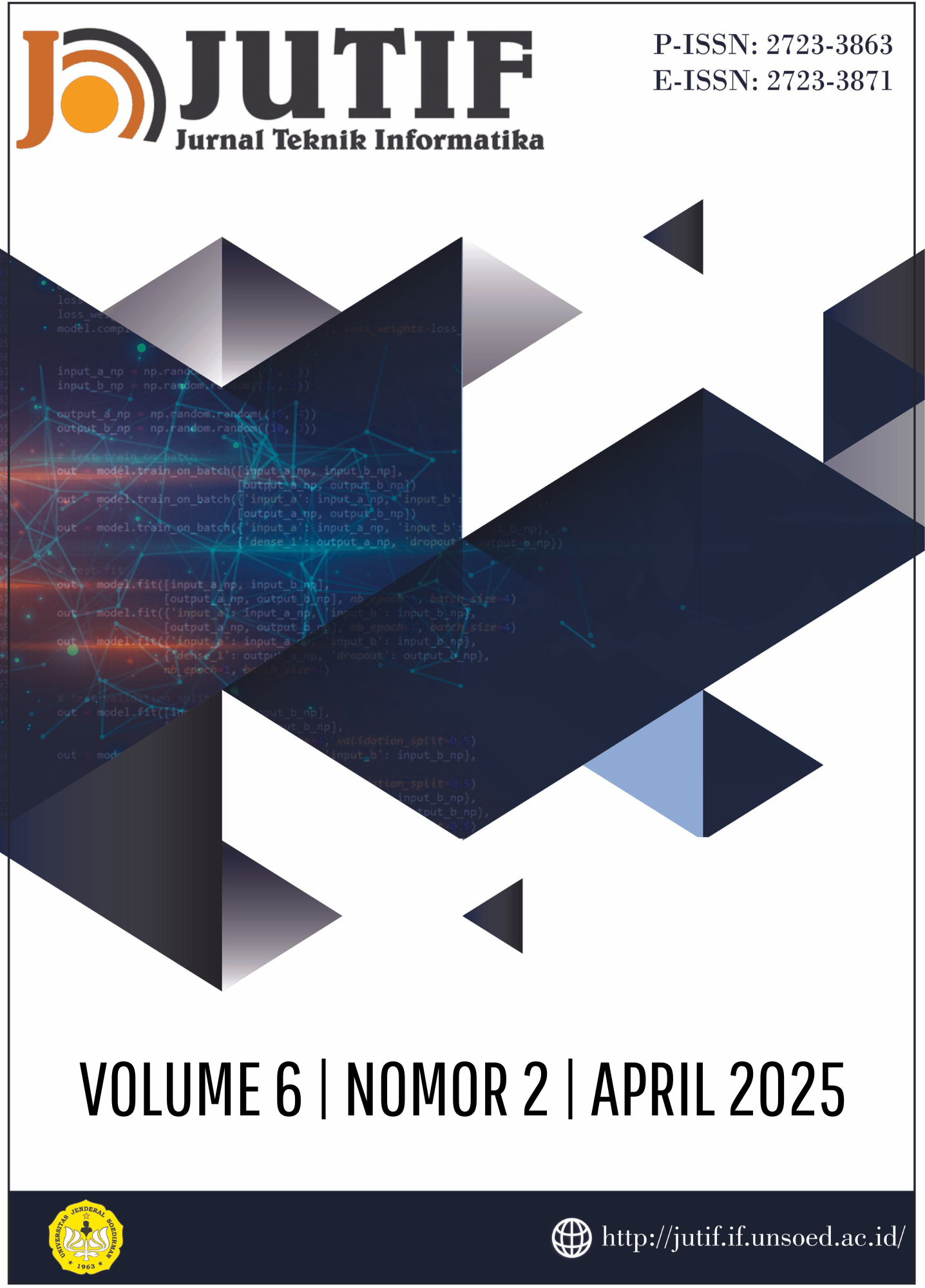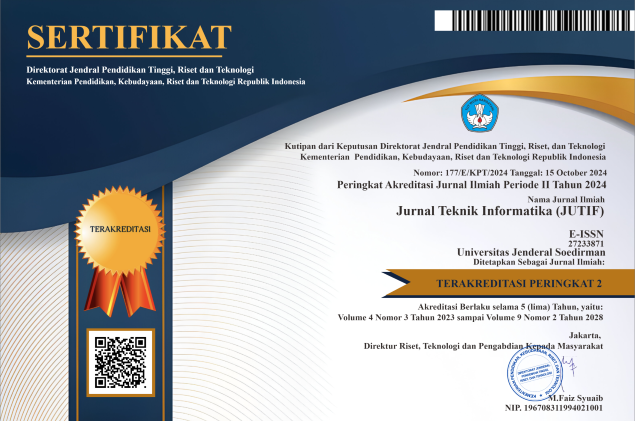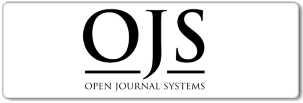Carrot Quality Classification Based on Color and Texture Features Using Artificial Neural Network Method
DOI:
https://doi.org/10.52436/1.jutif.2025.6.2.1401Keywords:
Artificial Neural Network, Carrot, Classification, Color, TextureAbstract
Carrots are popular vegetable plants that are usually consumed by the public. Determination of quality using the visual of human eye is considered to have many shortcomings. In previous studies, the carrot classification process had been carried out using a certain method. However, the level of accuracy resulting from several previous studies is still lacking because the processes and methods used are considered to be inaccurate, so innovation is needed by using processes and methods that are more precise to obtain classification results with a better level of accuracy. Therefore, this research proposes a classification of carrot quality based on color and texture features using an artificial neural network method. The proposed method consists of 6 stages, namely image acquisition, preprocessing, segmentation, morphological operations, feature extraction, and classification using artificial neural networks. In this study, quality is divided into three classes, namely feasible, less feasible, and not feasible using 300 carrot image datasets. The results obtained in the testing process obtained an accuracy of 100%, a misclassification error of 0%, and a computation time of up to 55 seconds. Based on the test results it can be seen that the proposed method can classify the quality of carrots accurately.
Downloads
References
B. S. Hakim, “Simulasi Pengaruh Media Tanam Sekam dan Pupuk Kandang Terhadap Pertumbuhan Tinggi Tanaman Wortel dengan Menggunakan Metode Fuzzy Sugeno Berbasis XL System,” Skrispi, pp. 13–16, 2013, [Online]. Available: http://etheses.uin- malang.ac.id/7627/
P. Simarmata, B. Andika, and S. Murniyanti, “Sistem Pakar Mendiagnosa Hama Tanaman Wortel (Daucus Carota) Menggunakan Metode Dempster Shafer,” J. Cyber Tech, no. x, pp. 1– 10, 2022, [Online]. Available: https://ojs.trigunadharma.ac.id/index.php/jct/article/view/3725%0Ahttps://ojs.trigunadharma.ac
.id/index.php/jct/article/viewFile/3725/796
Eva Riyanty Lubis, Panduan Praktis Budi Daya dan Manfaat Wortel. Bhuana Ilmu Populer, 2019, 2019. [Online]. Available: https://books.google.co.id/books?id=AdnYDwAAQBAJ&dq=manfaat+wortel&lr=&source=gbs_navlinks_s
Hesti Indah Mifta Nur’aini, Mengenal Tanaman Hortikultura. Penerbit Duta, 2019, 2019. [Online]. Available:
https://books.google.co.id/books?id=9yHCDwAAQBAJ&dq=manfaat+tanaman+wortel&lr=& source=gbs_navlinks_s
N. S. Siti Nurhanifah, Euis Dasipah2, Nataliningsih, Dety Sukmawati2, Nendah Siti Permana2, “Analisis Usaha dan.Faktor-Faktor.Produksi.Yang.Mempengaruhi Usahatani.Wortel. ( Daucus carota L) di.Kabupaten.Sukabumi.,” vol. 2, no. 2, 2022.
S. Diharjo, S. Suyanti, and S. Sunarmani, “Tingkat Kematangan Panen Buah Nenas Sampit Untuk Konsumsi Segar Dan Selai,” J. Hortik., vol. 16, no. 3, p. 80704, 2006.
I. Y. Lahtie and S. Usodoningtyas, “Pemanfaatan Wortel Dalam Sediaan Masker Untuk Mengatasi Kulit Wajah Bermasalah,” J. Beauty Cosmetol., vol. 3, no. 1, pp. 25–33, 2021.
Badan Pusat Statistik, “Produksi Tanaman Sayuran 2021,” Badan Pusat Statistik, 2021. https://www.bps.go.id/indicator/55/61/1/produksi-tanaman-sayuran.html (accessed Oct. 18, 2022).
E. F. Himmah, M. Widyaningsih, and M. Maysaroh, “Identifikasi Kematangan Buah Kelapa Sawit Berdasarkan Warna RGB Dan HSV Menggunakan Metode K-Means Clustering,” J. Sains dan Inform., vol. 6, no. 2, pp. 193–202, 2020, doi: 10.34128/jsi.v6i2.242.
C. N. Dengen, A. C. Nurcahyo, and K. Kusrini, “Penentuan Jenis Tanaman Berdasarkan Kemiringan Lahan Pertanian Menggunakan Adopsi Linier Programming Berbasis Pengolahan Citra,” J. Buana Inform., vol. 10, no. 2, p. 99, 2019, doi: 10.24002/jbi.v10i2.2253.
F. Al Azami, A. A. Riadi, and E. Evanita, “Klasifikasi Kualitas Wortel Menggunakan Metode K-Nearest Neighbor Berbasis Android,” Jurasik (Jurnal Ris. Sist. Inf. dan Tek. Inform., vol. 7, no. 1, p. 36, 2022, doi: 10.30645/jurasik.v7i1.413.
M. R. Tasya, B. S. W. A, and E. T. Luthfi, “Klasifikasi Kualitas Kematangan Wortel Menggunakan Metode GLCM ( Gray Level Co-Occurrence Matrix ) Dan Neural Network,” J. FATEKSA J. Teknol. dan Rekayasa, vol. 5, pp. 1–10, 2020.
M. Astiningrum, M. Z. Abdullah, and P. P. Sari, “Identifikasi Kualitas Terung Ungu berdasarkan Warna dan Tekstur menggunakan metode Jaringan Saraf Tiruan,” Semin. Inform. Apl. Polinema,
pp. 554–559, 2020, [Online]. Available: http://jurnalti.polinema.ac.id/index.php/SIAP/article/view/860
Y. Saintika, A. Wijayanto, and C. WIguna, “Perancangan Sistem Informasi Klasifikasi Wortel Berbasis Pengolahan Citra Digital,” JRST (Jurnal Ris. Sains dan Teknol., vol. 2, no. 2, p. 63, 2018, doi: 10.30595/jrst.v2i2.3201.
J. A. Widians, H. S. Pakpahan, E. Budiman, H. Haviluddin, and M. Soleha, “Klasifikasi Jenis Bawang Menggunakan Metode K-Nearest Neighbor Berdasarkan Ekstraksi Fitur Bentuk dan Tekstur,” J. Rekayasa Teknol. Inf., vol. 3, no. 2, p. 139, 2019, doi: 10.30872/jurti.v3i2.3213.
Alfian Firlansyah, Andi Baso Kaswar, and Andi Akram Nur Risal, “Klasifikasi Tingkat Kematangan Buah Pepaya Berdasarkan Fitur Warna Menggunakan JST,” Techno Xplore J. Ilmu Komput. dan Teknol. Inf., vol. 6, no. 2, pp. 55–60, 2021, doi: 10.36805/technoxplore.v6i2.1438.
M. E. Al Rivan, N. Rachmat, and M. Rizki Ayustin, “Klasifikasi Jenis Kacang-Kacangan Berdasarkan Tekstur Menggunakan Jaringan Syaraf Tiruan,” J. Komput. Terap., vol. 6, no. Vol. 6 No. 1 (2020), pp. 89–98, 2020, doi: 10.35143/jkt.v6i1.3546.
R. I. Borman, I. Ahmad, and Y. Rahmanto, “Klasifikasi Citra Tanaman Perdu Liar Berkhasiat Obat Menggunakan Jaringan Syaraf Tiruan Radial Basis Function,” Bull. Informatics Data Sci., vol. 1, no. 1, pp. 6–13, 2022.
Additional Files
Published
How to Cite
Issue
Section
License
Copyright (c) 2025 Muh Gimnastiar Idris, A. Arfan Fauzi, Adelia Syasikirani. N, Andi Baso Kaswar

This work is licensed under a Creative Commons Attribution 4.0 International License.



























